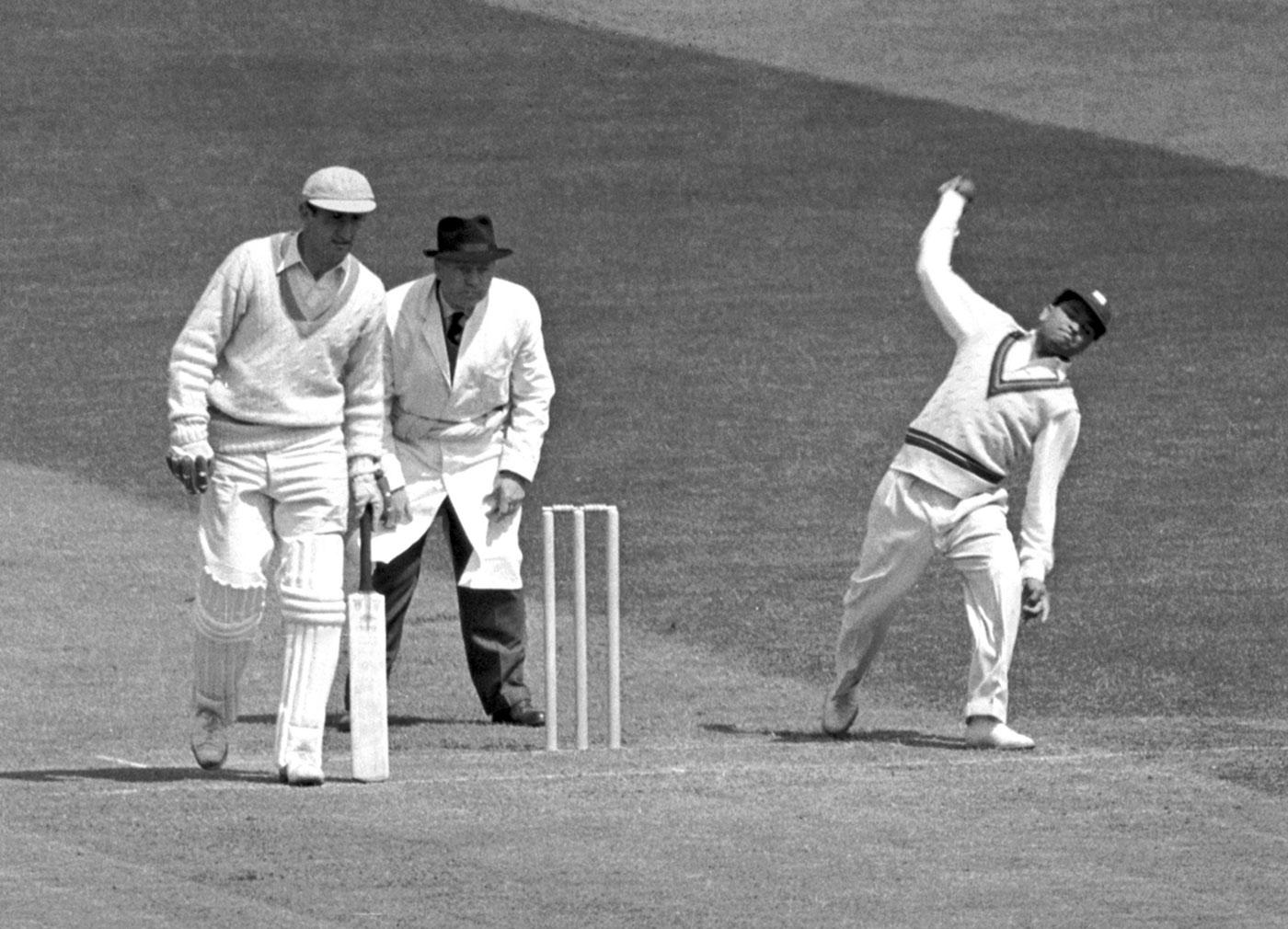Back in the 1960s, my college team had a "legspinner" - for want of a better description - PS Ramesh, who bowled legbreaks, offbreaks and straight ones, all with identical actions and no obvious change of grip. We played all our cricket on matting, and while Ramesh bamboozled most batsmen at that level, we did not find out how he would have fared on turf, as the selectors never fancied him beyond college cricket. These days he would probably have been taken much more seriously, and have played representative cricket, for his armoury certainly included the carrom ball, if not the doosra.
More than a decade earlier, West Indian crowds had first chanted the calypso about "those little pals of mine", Ramadhin and Valentine when the spin twins decimated England at Lord's to earn West Indies their first Test win in England. Bespectacled, nerdy-looking Alf Valentine was an orthodox left-arm spinner, but short and squat Sonny Ramadhin had a whole box of tricks that batsmen found hard to unravel. Bowling in long sleeves, he made the ball go this way or that at will, giving no hint of the deviation with his action.
Ramadhin's spirit was broken seven years later, when Peter May (285 not out) and Colin Cowdrey (154) put on 411 for the fourth wicket in the second innings of the first Test at Edgbaston. While May counterattacked, Cowdrey showed he was a master of pad-play in an ultra-defensive display of attrition. Ramadhin never recovered.
Cowdrey's padathon probably played a role in the introduction of the new lbw rule that enabled the umpire to rule a batsman out to balls pitching outside the off stump if he offered no stroke and the umpire believed the ball would have gone on to hit the stumps. In 1999, Ramadhin sensationally confessed in the wake of widespread arguments over the legality of the doosra that he threw the odd ball in his time.
Were he playing today, Cowdrey could not have got away with the generous forward thrust of his leg in front of his bat to demolish the Ajantha Mendises and Sunil Narines of world cricket, considering umpires are ever so willing to give lbw decisions, unlike their 20th-century counterparts, many of whom had their hands firmly in their pockets except when the batsman was palpably in front - while playing fully back!
Perhaps the first freak spinner in Test cricket history was Australia's Jack Iverson, who gripped the ball between thumb and middle finger and bowled a bewildering array of offspin, legspin and googlies. The mystery of his bowling was, however, short-lived. He barely lasted five Tests.
I had the pleasure of watching a mystery spinner at close quarters. My Hyderabad team-mate, the left-arm spinner Mumtaz Hussain bowled Osmania University to a Rohinton Baria Trophy triumph in 1966-67. No batsman at that level had an answer to his wiles, as he sent down orthodox left-arm spin, the chinaman and the googly with no perceptible difference in the action. His prize scalp of the tournament was Sunil Gavaskar, who says in his autobiographical book Sunny Days:
"Their (Osmania's) left-arm spinner Mumtaz Hussain, the hero of the tournament, proved deadly with his disguised chinaman and regular orthodox spin. In the second innings, Ramesh Nagdev and I were going strong after Naik's cheap dismissal. But Nagdev was not able to fathom Mumtaz Hussain's spin when he bowled the chinaman. I thought I knew, so in a purely psychological move I called out loud to Nagdev at the non-striker's end: 'Don't worry, Ramesh, I know when he bowls that one.' When Mumtaz heard this, he smiled mysteriously and tossed the ball up to me for the next few deliveries. I came down the wicket, but managed to hit only one four while the others went straight to the fielder. Mumtaz tossed up the last ball of the over slightly outside the off-stump. Too late I realized that he had bowled a googly and was stranded down the track, to be easily stumped."
Mumtaz was tragically converted to an orthodox spinner in first-class cricket, and though he had a very respectable career, he was never again the wonder bowler of his youth - at least not until he unfurled his magical wares again in his last two Ranji Trophy matches. Legspinner BS Chandrasekhar was luckier. In a land notorious for coaches who would try to fit every spinner into a single mould, it was a miracle that allowed him to continue to deliver lightning-quick missiles all his life, with no concession to orthodoxy.
A story similar to Gavaskar's, but probably apocryphal, involves Geoffrey Boycott and legspinner John Gleeson, who posed quite a few problems for English batsmen during the 1970-71 series in Australia. When one of his batting partners told him he was now able to distinguish Gleeson's googly from his legbreak, Sir Geoffrey allegedly whispered to him, "Don't tell anyone. I could always read him."
V Ramnarayan is an author, translator and teacher. He bowled offspin for Hyderabad and South Zone in the 1970s
